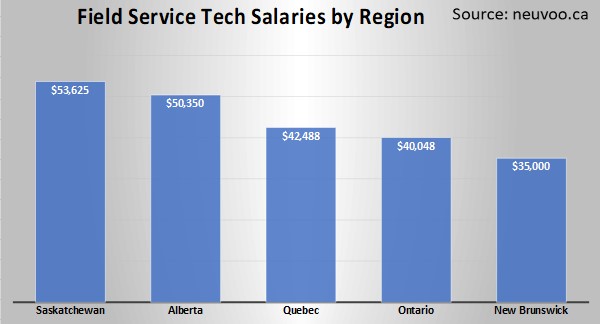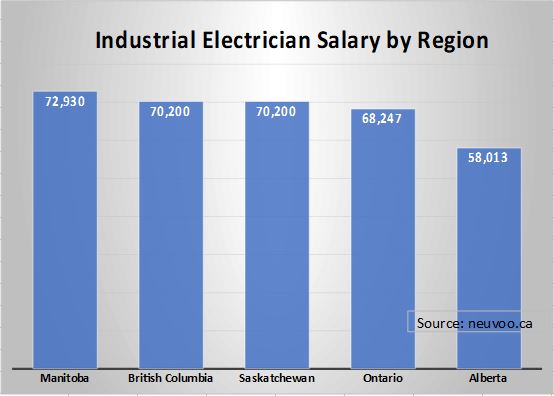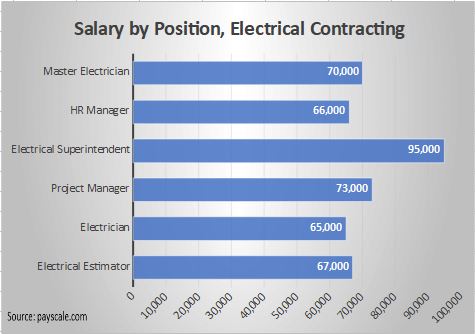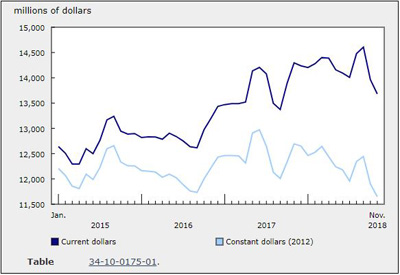Field Service Tech Salaries by Region
The average field service technician’s salary in Canada is $40,047 per year or $20.54 per hour. Entry level positions start at $18,200 per year. Most experienced workers make up to $68,079 per year.

The average field service technician’s salary in Canada is $40,047 per year or $20.54 per hour. Entry level positions start at $18,200 per year. Most experienced workers make up to $68,079 per year.

The total value of building permits issued by Canadian municipalities increased 7.4% to $8.7 billion in December. Increases were reported in five provinces, led by Ontario (+10.5% to $3.4 billion) and Quebec (+15.8% to $2.2 billion). For 2019 overall, municipalities issued $102.4 billion worth of permits, up 2.6% compared with 2018.

Among six electrician related jobs, industrial electricians have the highest salaries. At the other end, field service technications. The difference: $36,000.

Often, code users encounter situations where they find themselves at odds with the rules contained in the CEC, Part I. These situations can occur for designers, consultants, installers, inspectors, manufacturers, students, instructors and standards developers alike…

Too often the public hears about projects that go over budget and over schedule. But that’s not what happens on every project. What can we learn from the projects that succeed?

This is the third article of a four-part introductory series on managing security risks in smart lighting systems. In this series, learn about best practices, based on NIST standards and guidelines, for identifying and mitigating cybersecurity risks and threats, as well as implementing cybersecurity controls on an organizational level.

Electrical contracting, like the rest of the construction industry, is in a state of rapid change. Electrical contractors must deal with a variety of forces that are impacting installers.

Pikolin S.L. is a fantastic mattress manufacturer in France and Spain when it comes to sleeping comfort. To achieve transparent energy consumption, Pikolin relies on a flexible and future-proof energy management solution from Siemens.

The new electrical code includes several changes to support electrical workers in the safe installation and maintenance of electrical equipment and systems. It came into effect on January 1, 2020.

Compared to counterparts in five other provinces, industrial electricians in Manitoba have the highest salaries, but not by much.

Held from November 7th to 9th in Orlando, Florida and aired on ESPN 2, the Ideal National Championships give electricians a chance to display their skills in a high-level competition.

“It drives me crazy when my salespeople complain our prices aren’t competitive.” This was a manager who brought me in to work with his team. He continued, “How do I get my team members to stop selling on price?”

Ideal Networks is urging electricians to master new skills and equipment now to cope with the growing use of PoE (Power over Ethernet) in intelligent lighting applications. In particular, PoE testers can help electricians to conduct quick, accurate PoE validation, eliminating guesswork and getting the job done faster.

I have been terrible at planning my life. Or perhaps I was brilliant, demonstrating a stroke of genius that others will emulate in the future. More realistically, perhaps I don’t know. But I do know one thing for certain. At that moment, I was very confused.

This graph shows six salaries by position for electrical contracting. Of those surveyed, electrical superintendent outpaces the next highest salary by $23,000.

Total investment in building construction decreased 2.0% from October to $13.7 billion in November. Both the residential (-2.2% to $9.4 billion) and non-residential (-1.6% to $4.3 billion) sectors declined. On a constant dollar basis (2012=100), investment in building construction decreased 2.1% to $11.6 billion.
This project is funded [in part] by the Government of Canada.
Ce projet est financé [en partie] par le gouvernement du Canada.
